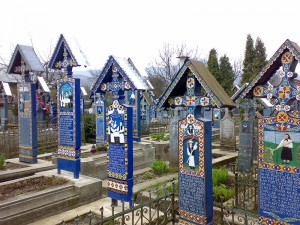Guest post by comedian Sergiu Floroaia.
Sergiu Floroaia is a Romanian stand-up comedian, comedy writer and comics writer. He contributed to magazines such as FHM and Playboy.
He is also a friend of The Humor Code.
When death knock-knocks at the door
Sick jokes follow the death of a celebrity like autumn used to follow summer before climate change. And when that happens there’s always an audience member with sharp ears and a “too soon” on the tip of his tongue ready to be spat out alongside a moralizing speech about what constitutes humor, good taste and common decency. As a comedian, I’ve heard it a million times.
Because there’s a predominant belief that dirt-napping is something immutably solemn: when someone dies, no matter how ridiculous their life or their death may have been, their existence is idealized, their mistakes are forgotten, their story is rewritten for a G rating.
Some say it is only today – through the Internet and social networking platforms – that people have been given an unparalleled amount of immediacy in mining someone else’s death for humor. But there is a precedent. There has always been a platform for this: the dead people’s crosses. And I’m not talking about vandalism. I’m talking sarcasm approved by the families of the deceased.
This is how it has been for almost 80 years at the Merry Cemetery – a one-of-a-kind place in the village of Săpânța, Romania – where over 800 oak crosses bear many of the dirty details of the lives and deaths of the people pushing up daisies from beneath them. The crosses are blue, though many of them make you feel anything but, and carry a carved and colorfully painted image of the dead and an epitaph, sometimes witty or darkly humorous, but always true.
The epitaphs are 10-17 line poems written by Stan Ioan Pătraș (a carpenter and the creator of the Merry Cemetery) or Dumitru Pop (his successor), one of the most popular being this one:
Under this heavy cross / Lies my poor mother in-law / Three more days she would have lived / I would lie, and she would read (this cross). / You, who here are passing by / Not to wake her up please try / Cause’ if she comes back home / She’ll never leave me alone. / But I’ll behave so well / That she’ll not return from there.
Another one is engraved on Ioan Toaderu’s cross, former mayor of Săpânța, that died at the age of 52. A man that loved horses, but, he says:
One more thing I loved, / To sit at a table in a bar / Next to someone else’s wife.
The illustrations on the crosses show the deceased either doing what they loved, being with what they held dearest (like family, sheep or alcohol) or how they died (being hit by a car, a truck or even decapitated) – all painted in a riot of bright colors and a childlike fashion by one of the two carpenters.

Being a stand-up comedian, my job is to regularly point out that comedy is very likely the most subjective of all art forms. That what you think is acceptable or funny is really different than what other people might think is acceptable or funny. That, even in the most painful and desperate moments, humor lifts our minds from anguish. That it helps us deal with our inevitable fates. And that, if you’re good at it, it gets you a career and free drinks.
